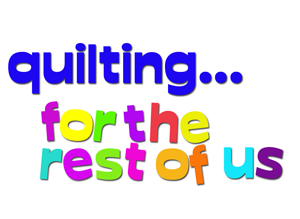When life hands you lemons, you make lemonade.
When life hands you bales of snow...
When I started feeling somewhat better from the Great Sinus Infection of 2015, I decided I could probably handle doing a little dyeing. It's been a long while since I've been in my dye studio in the basement, so after I did a little cleaning up and removing of cobwebs (!) I made good use of the dogs' time outside and filled up three buckets of snow while they were snuffling about.
This is not the first time I've snow-dyed, but last year when I did it, I followed directions on on a few blogs that all said about the same thing, but I wasn't pleased with the results. Most snow-dye instructions I've found call for creating the dye concentrate with water first, then using the water dye on the snow. Well, what happens when you take a water-based dye and let it melt with snow? Of course--it dilutes. I got very pale pastels. Pastels are all well and good but I like a little more saturation, so this time I did what I do with ice dyeing--I just dumped that dye powder right on top of the snow.
It does, indeed, use up more dye powder that way but hey, I only do this a couple of times a year so I'm okay with that.
I did three different color combos and three different folds on the fabrics (one yard each).
The first was fuschia and intense blue, and I folded the fabric in quarters lengthwise and then did a loose pleat.
The second was stormy grey, old rose, and boysenberry, and I spiraled the fabric.
The third was turquoise, lemon yellow, and tangerine, and I just scrunched it up.
So here's what I remembered while I was rinsing the fabric. Turquoise and tangerine are pretty close to being complementary colors, which means that mixing them gives you something in the neighborhood of brown or gray.
I'd been thinking more about the turquoise and yellow, and about the tangerine and yellow, without really thinking through the tangerine and turquoise. So, this isn't the most attractive end result but I already have some ideas for possible overdye designs I might do. (I like a nice neutral but I'd want it a little more intentional and not just muddy like this.)
And here's what I learned: Boysenberry is an aggressive little fella. I used more gray and rose than I did boysenberry--I just barely dotted the boysenberry on there. But it ran amuck.
I was surprised with the amount of light I ended up with in the middle (a very pale gray-purple with one bright random splotch showing). I thought I'd spun it more loosely than that. However, I can play with that, so no worries there. I don't mind this result at all--it's just not what I was picturing it would be. But that's what I like about hand-dyeing. There's always that surprise element involved.
Finally, the fuschia and intense blue combination--this one I knew what I'd get, more or less. There's a lot less variability when you're only working with two colors.
Because of the way it was folded and pleated, one end has more blue than the other. I'd planned on cutting all of these into fat quarters but I'm thinking this one will probably do better has half yard pieces so each piece would have both blue and pink; the spiral one above will stay as a whole piece; and the muddy mess at the top needs more work done on it anyway.
It was fun to be in my dye studio again, but I want to actually have a plan for my next dye session so I've got to do some thinking first. Plus, I think it's time for me to break out the wax resist (batik) supplies...





